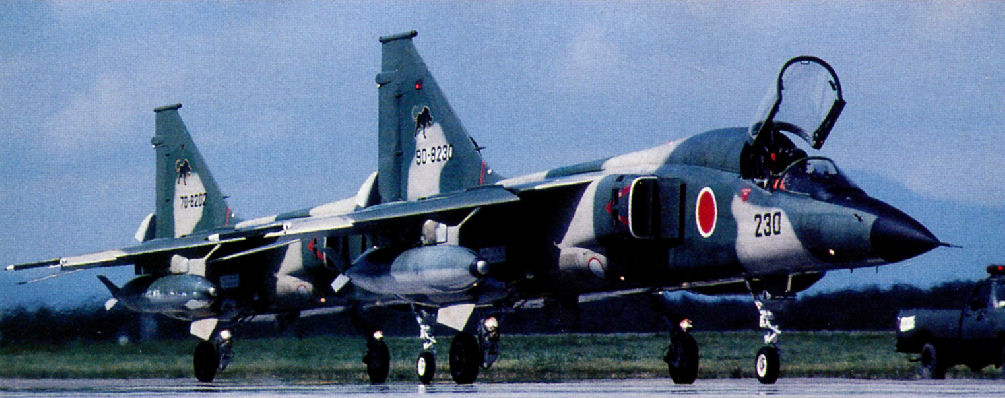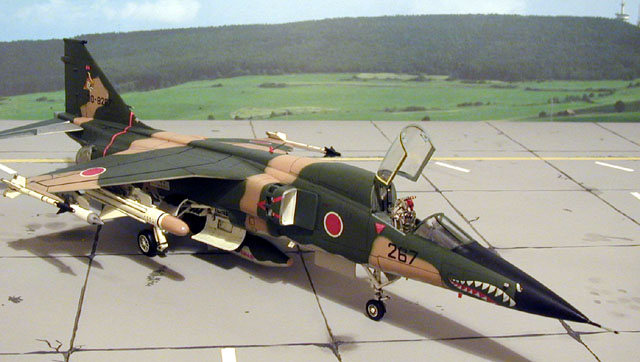The Mitsubishi F-1 fighter jet may not be as widely recognized as some of its American or Russian counterparts, but it holds a unique place in aviation history as Japan’s first indigenous supersonic jet. Developed during the 1970s as a joint project between Mitsubishi Heavy Industries and Fuji Heavy Industries, the F-1 was Japan’s first attempt at designing a supersonic fighter specifically for air-to-ground combat. Despite its relatively short service life, the F-1 laid the groundwork for Japan’s modern defense capabilities and marked an important step in the country’s post-World War II military development.

A Fighter Born Out of Necessity
In the decades following World War II, Japan’s Self-Defense Forces (JSDF) relied heavily on foreign-made aircraft, particularly those from the United States. However, as tensions in the Asia-Pacific region escalated during the Cold War, Japan recognized the need to develop its own fighter jets to reduce dependence on foreign suppliers and enhance its national security.
The F-1 was the answer to this need. Based on the Mitsubishi T-2, Japan’s supersonic trainer jet, the F-1 was adapted to serve as a multi-role fighter with a strong emphasis on air-to-ground attack capabilities. It was designed to protect Japan’s coastline and islands from potential threats, offering the ability to strike enemy targets on land and sea.

Design and Capabilities
The F-1’s design was a significant leap forward for Japan’s aviation industry. Sporting a sleek delta-wing configuration, the aircraft was capable of reaching speeds up to Mach 1.7, allowing it to engage in high-speed combat operations. Its twin Ishikawajima-Harima TF40-IHI-801A turbofan engines provided the power necessary for supersonic flight while maintaining agility in dogfights and precision in ground attacks.
While the F-1 was not as heavily armed as some of the world’s more famous fighters, it was equipped with a versatile array of weapons that made it a formidable opponent in the skies. The aircraft carried a 20mm JM61A1 Vulcan cannon for close-range engagements and was capable of carrying a variety of bombs and air-to-surface missiles for ground strikes. It could also be equipped with air-to-air missiles for defensive operations.
One of the F-1’s standout features was its ability to carry anti-ship missiles, making it an essential asset in Japan’s defense strategy. With Japan’s maritime borders being a significant point of focus, the F-1 was designed to protect Japan from naval incursions, making it a critical player in coastal defense.

Combat and Operational History
The F-1 entered service with the Japan Air Self-Defense Force (JASDF) in 1978 and remained in active duty for nearly 30 years. During its service, the F-1 never saw direct combat, but it played an essential role in Japan’s defense strategy, particularly in maritime and coastal protection missions. Its ability to patrol Japan’s extensive coastline and islands, coupled with its versatility in ground attack missions, made it a crucial component of the country’s air force during the Cold War era.
In addition to its role in national defense, the F-1 participated in numerous joint military exercises with Japan’s allies, helping to strengthen international cooperation and showcase Japan’s growing aviation prowess. These exercises highlighted the F-1’s capabilities and demonstrated Japan’s commitment to maintaining a strong and self-reliant defense force.
Legacy and the Path to Modern Aviation
While the F-1 was eventually phased out in favor of more advanced fighters like the Mitsubishi F-2 and the F-15J, its impact on Japan’s aviation industry cannot be overstated. The development of the F-1 marked a turning point for Japan, proving that the country could produce advanced military aircraft and paving the way for future technological advancements.
The lessons learned during the development of the F-1 were instrumental in the creation of the F-2, a multi-role fighter jet that remains a key part of Japan’s air defense. The F-2, which shares design elements with the American F-16, benefited greatly from the experience gained during the F-1 program, particularly in terms of manufacturing and operational strategies.
Conclusion
The Mitsubishi F-1 may not be a household name in the world of fighter jets, but its role in shaping Japan’s modern air force is undeniable. As Japan’s first supersonic jet, the F-1 represented a major achievement in the country’s post-war rearmament and defense capabilities. Though it never saw combat, its ability to protect Japan’s coastline and islands, coupled with its role in international military exercises, cemented its place in history as a critical player in Japan’s defense strategy.
Today, the F-1 serves as a reminder of Japan’s ingenuity and its ability to rise to the challenges of modern warfare. As the country continues to develop advanced fighter jets like the F-35, the legacy of the F-1 lives on, inspiring future generations of engineers and pilots to push the boundaries of aviation.





